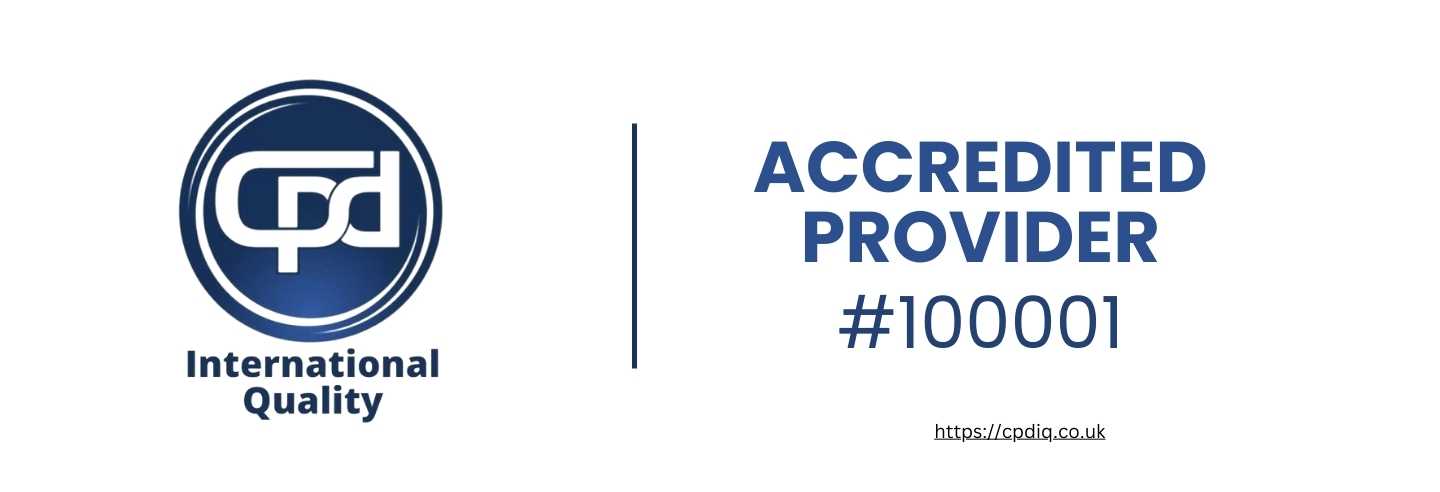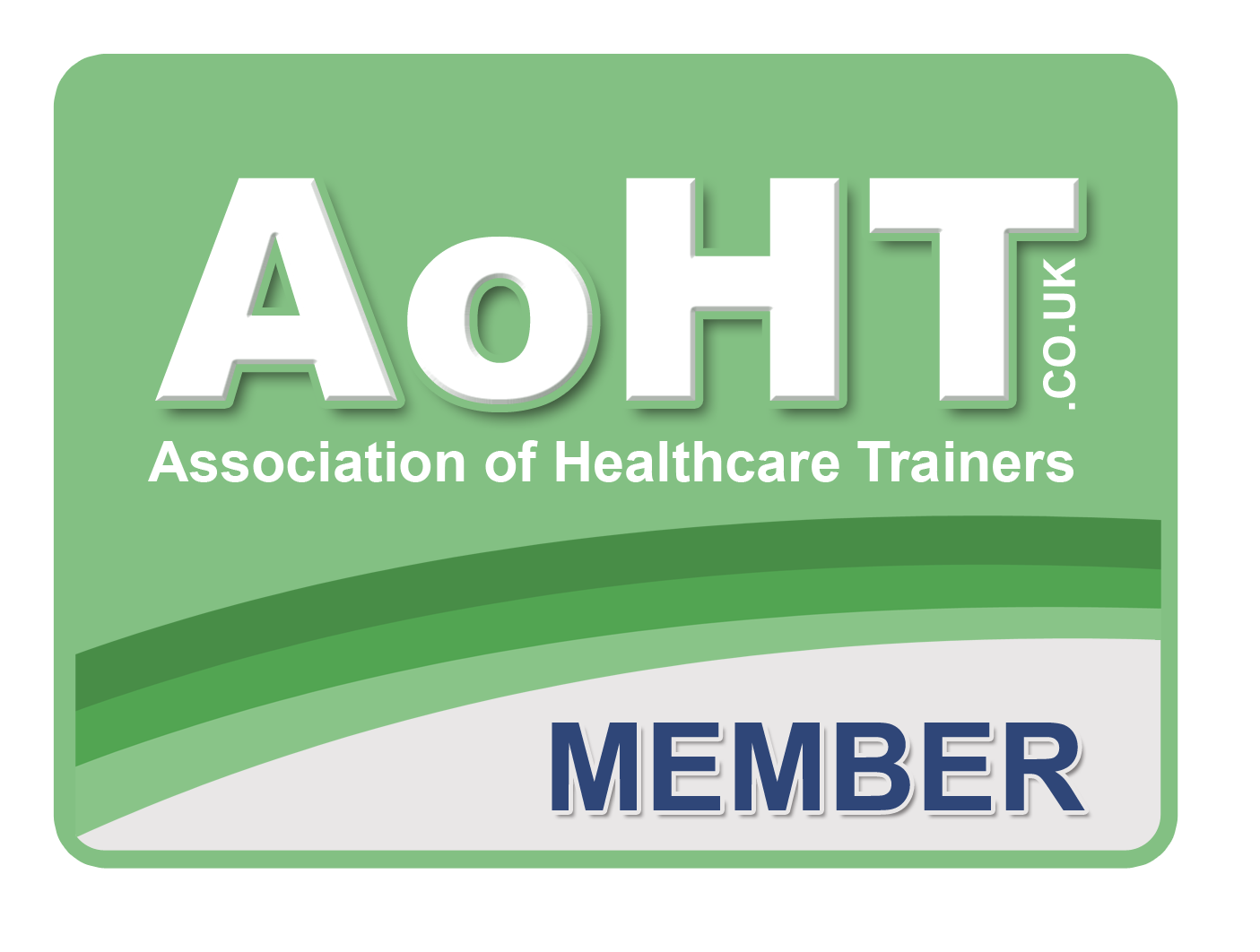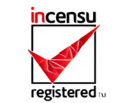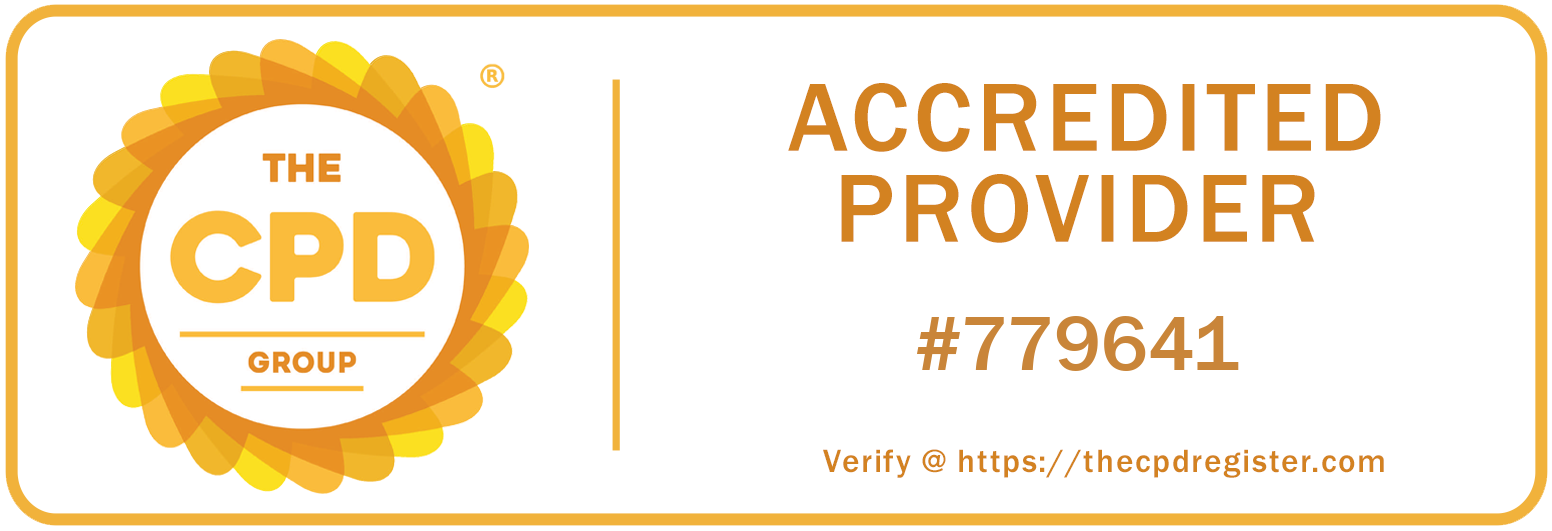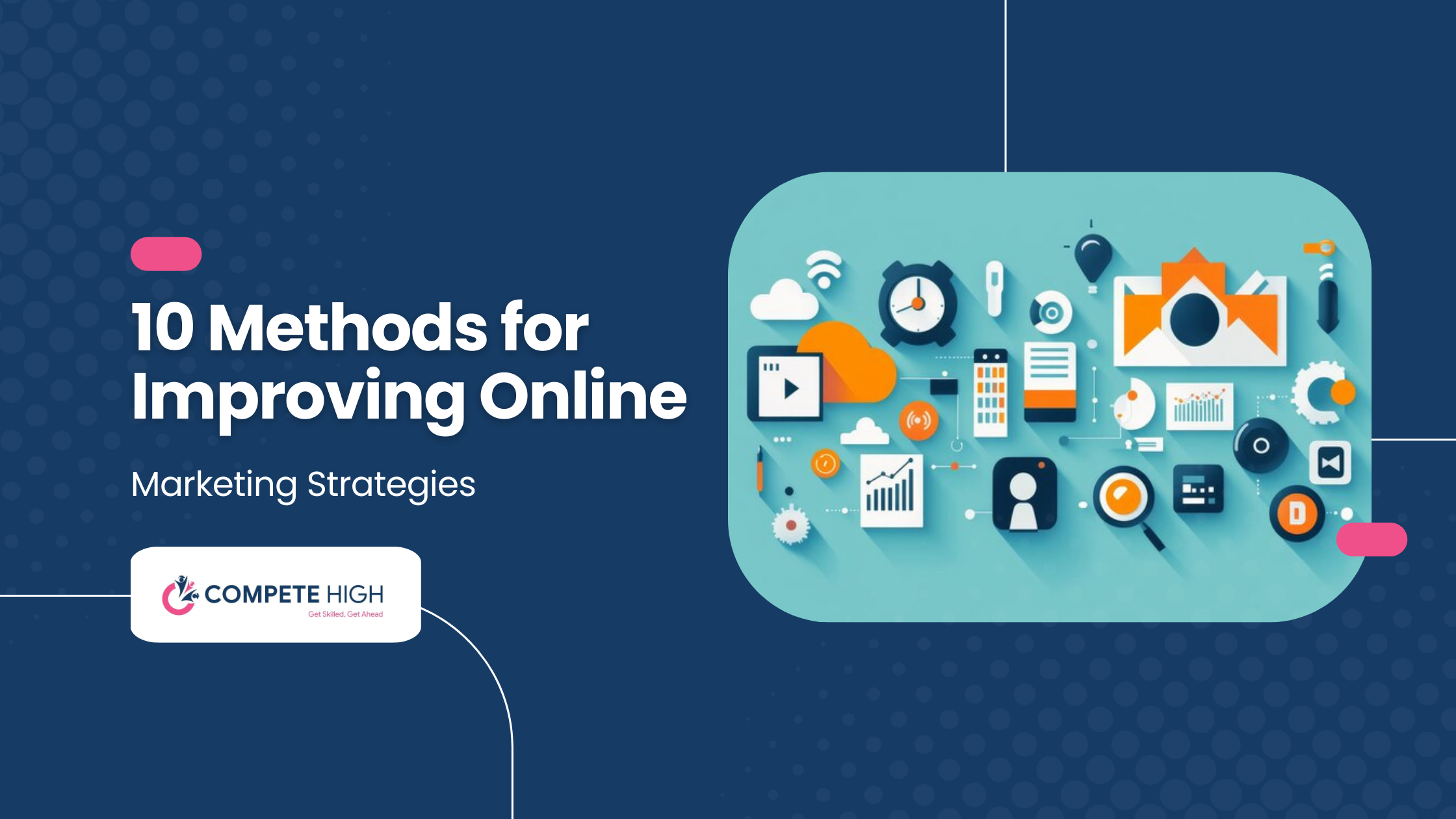
Effective methods for improving online marketing strategies are essential for growing a business in this modern and digital era. They facilitate attracting more customers and increasing revenue. Given that digital tools and trends are constantly evolving, it is very crucial to enhance a company’s marketing strategy continually.
In this blog, we will talk about how to improve online marketing strategies, efforts, types of online marketing strategies and achieve better results with your target audience.
Quick Overview
Mastering online marketing is key to business growth in the digital age. This guide covers 10 essential methods to improve marketing strategies, visibility, engage your audience, and drive conversions.
✅ Know your audience and segment effectively
✅ Optimise your site for SEO and mobile
✅ Create valuable content and engaging videos
✅ Use social media and email marketing smartly
✅ Leverage data, CRO, and retargeting for better ROI
✅ Stay current with the latest marketing trends
1. Methods to Improve Online Marketing Strategies: Understand Your Target Audience
Understanding your target audience is crucial for effective marketing. By knowing their needs, interests, and behaviours, you can craft tailored messages that resonate and drive engagement.
Importance of Knowing Your Audience
To achieve successful marketing, you need to understand your audience. When you know who they are and what they need, you can craft the right message for the right audience at the right time. By understanding their pain points, interests, and behaviours, you can create offers, content, or ads they are eager to see. This knowledge enables you to develop more relevant marketing, fostering a stronger connection with your audience and highlighting the importance of effective online marketing strategies.
How to Gather Audience Insights
There are various methods to improve online marketing strategies and deepen your understanding of your audience. For instance, Google Analytics allows you to analyse your website visitors and gather information on their demographics, interests, and behaviours. Customer surveys provide another direct way to learn about your target audience's needs and preferences. Additionally, social media platforms like Facebook and Instagram offer audience insights on who engages with your content, providing valuable information to further refine your strategy. Use these insights to shape your marketing strategy accordingly, ensuring it delivers what your audience wants.
Segment Your Audience
The more segments you have, the more targeted and personalised your marketing efforts can be. This increases the effectiveness of your campaigns because the more aligned your messaging is with a specific target segment, the more relevant it will be to your customers and prospects, leading to higher conversion rates. For example, an email campaign aimed at repeat customers should focus on different messaging than one directed at first-time buyers.
2. Optimise Your Website for SEO
Optimising your website for SEO involves enhancing its structure, content, and keywords to improve search engine rankings. This increases visibility, driving more organic traffic and potential customers to your site.
Why SEO is Foundational to Online Marketing
Search engine optimisation (SEO) ensures that potential customers can find your website. The higher your site ranks in search results, the more visibility and organic traffic you’ll receive. A well-optimised website not only gains more exposure but is also easier to navigate, converting more visitors into leads or sales. Recognising the importance of effective online marketing strategies, SEO serves as the starting point for any successful approach, consistently bringing in high-quality traffic without recurring advertising costs.
Key SEO Techniques
Effective SEO relies on various techniques driven by technology, highlighting methods to improve online marketing strategies. Keyword research helps identify the search terms your audience uses, allowing you to optimise your content accordingly. It’s essential to ensure that every page on your website is properly structured with meta tags, headings, and text that include the right keywords. Link building is also vital; backlinks from other websites indicate authority to search engines and can boost your rankings. Finally, producing polished, original content that is useful to your audience is crucial for both SEO and user engagement.
Stay Updated on SEO Trends
Without delving into the reasons behind Google’s constant algorithm changes, it’s clear that we must stay abreast of the latest SEO strategies. Techniques that were effective a year ago may no longer yield results today. Keeping up with changes in how Google indexes websites—such as mobile-first indexing, page speed, and Core Web Vitals—can help keep your site optimised. Adjusting your SEO strategy to the evolving landscape will aid in maintaining and improving your search rankings.
3. Leverage Content Marketing
Leverage content marketing to attract and engage your target audience by providing valuable, informative material that builds trust and authority. Quality content not only enhances your brand's visibility but also nurtures leads throughout their buying journey.
Why Content is King
Content marketing is the most efficient way to attract and engage an audience while building trust. By providing useful, relevant, and informative material to your target market, you establish yourself as an authority in your sector. This educates and informs your audience so that when they reach a decision point and need a solution, they are more likely to turn to you. Quality content not only attracts visitors to your website and improves your SEO rankings but also helps nurture your leads through the buying journey. In a competitive marketplace where consumers are bombarded with messaging daily, content is king because it informs, educates, and persuades, helping you develop long-term relationships with potential customers.
Create Valuable and Engaging Content
To be interesting, your content must also be useful. You need to provide your audience with something that solves a problem, answers a question, or offers new insights. The format of your content delivery can make all the difference. A blog post can give a detailed breakdown of your topic, while a video can convey a complex message in an easily digestible format. An infographic can visually represent statistics in a more engaging way, and a case study provides a real-world example of your product or service in action.
Content Promotion and Distribution
Producing excellent content is just the beginning. You must promote and distribute it to maximise its impact. If you’ve already developed a following on social media, those channels are effective for distributing content, as you can engage directly with your followers, who can then share it with their networks. Email is another way to push content directly to subscribers. Paid promotion on platforms like Facebook or Google Ads can expand your audience. Additionally, syndication—sharing the content with other publications or industry partners—can further enhance your reach.
4. Use Social Media Effectively
Using social media effectively involves engaging with your audience through meaningful conversations and tailored content on the right platforms. By fostering connections and utilising targeted advertising, you can enhance brand visibility and drive customer loyalty.
Choosing the Right Platforms
Not every social media platform is suitable for every business. To effectively reach your audience, you need to be active on the platforms where they spend their time. For professional-oriented businesses, LinkedIn may be the best choice, while Instagram and TikTok are ideal for visually-oriented or consumer-focused brands. Research where your audience is most active and create content tailored to those platforms. This approach supports effective online marketing strategies by allowing you to allocate resources efficiently, leading to better engagement and maximised impact.
Engage With Your Audience
Social media is a conversation, not a broadcast. It provides an opportunity to respond to customers' comments, answer their questions, and actively participate in discussions. A socially engaged brand is closely connected to the people it serves, fostering a community around the brand. The effective use of social media platforms enables you to be more responsive and approachable in your communications, enriching the value of interactions.
Leverage Paid Social Advertising
Paid social media ads enable you to reach a wider, more targeted audience than organic posts alone. You can target users by demographics, interests, behaviours, and previous interactions with your brand on platforms like Facebook, Instagram, and LinkedIn. These ads can effectively drive traffic, generate leads, and increase sales by putting the right content in front of the right users at the right time, further enhancing your effective online marketing strategies.
5. Invest in Email Marketing
Investing in email marketing helps you connect personally with prospects and customers through targeted messages. Its cost-effectiveness and high ROI make it a key tool for fostering engagement and brand loyalty.
Why Email Marketing Remains Effective
While social media and other digital channels have gained popularity for lead nurturing, email remains the most effective way to connect personally with prospects and existing customers. Email delivers your messages directly to their inboxes, allowing you to share targeted, personalised content with your subscribers. Additionally, email marketing is relatively inexpensive and yields an excellent ROI, keeping your business top-of-mind while enabling you to engage existing customers with relevant content and offers.
Segment and Personalise Emails
Start by segmenting your email list into smaller groups based on criteria such as age, gender, location, buying habits, online activity, or previous engagement with your messages. This allows you to send more tailored communications to each segment. Personalising your messages by addressing recipients by name, suggesting products based on previous purchases, or offering content aligned with their interests can lead to higher open and click-through rates, ultimately delivering better results.
Optimise for Mobile
More than half of all emails are read on mobile devices, making it essential to optimise your emails for mobile viewing. This includes using responsive design, ensuring that content and images look good on smaller screens, and keeping messages concise and easy to read. A clear call-to-action that is easy to tap and fast load times are vital to prevent readers from bouncing away. By optimising emails for mobile, you ensure your audience remains engaged with your messages, no matter where they are.
Learn all about Email Marketing and how it works from our Email Marketing Online course now!
6. Implement Data-Driven Marketing
Implementing data-driven marketing involves leveraging insights from data analysis to inform your strategies and decision-making. By understanding audience behaviour and engagement metrics, you can optimise campaigns, personalise content, and enhance overall marketing effectiveness.
Why Data is Key to Informed Decision-Making
Making effective marketing decisions without data is nearly impossible. Without it, you can’t identify what is working and what isn’t, spot trends, optimise your marketing efforts, or base your decisions on concrete evidence. Data-driven marketing allows you to understand how people engage with your brand and what interests them, enabling more accurate targeting and personalisation, which leads to better results.
Tools for Data Analysis
There are numerous tools available for tracking and analysing key marketing metrics. For example, Google Analytics is a free tool that monitors your website's traffic, audience engagement, and conversion rates. HubSpot offers a comprehensive suite for inbound marketing that tracks traffic, engagement, and lead generation. Additionally, SEMrush is an excellent tool for analysing SEO performance, keyword rankings, and competitor activity. Marketers can use these tools to monitor performance metrics such as traffic, conversion rates, and engagement, allowing for data-backed decisions that refine and enhance their marketing strategies.
A/B Testing for Continuous Improvement
A/B testing is a powerful method for optimising virtually every aspect of your marketing. By creating two versions of an ad, email, landing page, or other elements, you can test them with a small portion of your audience to see which performs better. Once you identify the winning version, you can update the underperforming one and test again. This iterative approach helps you continually refine your strategy, boosting your CTRs, engagement, and conversions. You can A/B test anything from email subject lines to CTA buttons.
7. Focus on Conversion Rate Optimisation (CRO)
Focusing on Conversion Rate Optimisation (CRO) boosts the percentage of visitors who take desired actions, maximising ROI. By improving user experience, you can generate more leads without increasing traffic costs.
Importance of CRO in Maximising ROI
CRO (Conversion Rate Optimisation) is the ongoing process of increasing the percentage of website visitors who take a desired action, such as filling out a form, signing up for a newsletter, or making a purchase. Through CRO, we refine the user experience while eliminating sources of friction, allowing your business to maximise results from existing traffic without additional investment in driving more visitors to your website. This approach highlights the importance of effective online marketing strategies, generating a higher ROI for your business. As you focus on CRO, you will see more leads and sales coming in without the need to increase your advertising spend.
Strategies for Improving Conversions
Key strategies for improving conversions include optimising page-load speeds—since a slow-loading page leads to higher exit rates—enhancing UX/UI design to create a coherent and intuitive site, and framing strong Calls-to-Action (CTAs) that provide clear next steps for users to reach your conversion point. Well-designed CTAs that are visually prominent encourage users to take action and are essential for the effective use of social media platforms in driving traffic to your site.
Use Heatmaps and Session Recordings
If you haven’t yet, consider using a tool like Hotjar to gain insights into user behaviour on your site. This tool provides heatmaps that show where users focus their attention, where they click, how far they scroll, and how long they spend on various pages. By analysing this data, you can identify which aspects of your site are effective and which need improvement, reinforcing your effective online marketing strategies to guide visitors through the conversion funnel. Additionally, session recordings allow you to observe individual user interactions, revealing where they encounter obstacles or drop-offs.
8. Incorporate Video Marketing
Incorporating video marketing boosts engagement and brand visibility, as users prefer video for information. Diverse video content can drive traffic and enhance conversions.
The Growing Power of Video
Users are watching more video content, and studies show that they prefer it over text or images for consuming information. Video is also engaging; it captures viewers' imagination and is an effective way to communicate complex material quickly. If you're looking for new ways to engage your audience and ensure that your message is retained, video marketing could be the answer. Whether through your social media feed, website, or email marketing campaign, incorporating video could be the secret to boosting engagement. Recognising the importance of effective online marketing strategies, as users increasingly turn to video for product information, tutorials, and brand insights, it may be time to adopt this format in your strategy.
Types of Video Content to Create
There are many types of video that drive engagement: Product demos (e.g. unboxing, voiceover, tutorials) showcase your product in action and inform customers about its features and benefits. Problem-solving videos (e.g. tutorials, Q&A) help users tackle issues or guide them through specific tasks, establishing your brand as an authority. Behind-the-scenes content (e.g. video tours, conference footage) makes your brand more relatable and fosters a connection with viewers. Customer testimonials (e.g. video reviews) allow real people to share their experiences with your product, showcasing their stories and proving its value.
Leverage YouTube and Video Ads:
YouTube boasts incredible reach and versatile advertising options that can greatly enhance your video marketing efforts. Additionally, you can use paid ads on Facebook or Instagram, which include video placements that blend seamlessly into users' feeds. Video ads tend to be highly targeted and can reach specific demographics or retarget users who have previously interacted with your brand. This dynamic ad format is a key component of effective online marketing strategies, as it can increase traffic, lead generation, and conversions.
9. Retargeting and Remarketing Strategies
Retargeting and remarketing strategies aim to re-engage users who showed interest in your brand but didn't convert. By delivering personalised ads, you can remind them of your offerings and encourage purchases.
Why Retargeting is Effective
The second type of campaign, retargeting, works by re-engaging users who have shown interest in your website but did not convert. These users are more likely to recognise your brand and have visited pages that interest them. Once your retargeting campaign kicks in, your brand stays top-of-mind with this user group, prompting them to return and complete the action they abandoned.
For example, if you sell running shoes and run a banner campaign on a health and fitness site, you can retarget users who visited your website but didn't make a purchase, specifically targeting those who abandoned their carts or visited the 'running shoe' page. This highlights the importance of effective online marketing strategies that focus on re-engaging potential customers.
Platforms for Retargeting
Retargeting is possible through Google Ads, Facebook, and Instagram, among other platforms, by showing ads to users who have interacted with your website in the past. For instance, Google Ads' remarketing campaigns allow you to show ads to users on the Google Display Network, while Facebook's retargeting options let you serve ads to people who have visited your page, watched your content, or abandoned their cart, among other actions. These platforms offer highly granular targeting options, enabling you to reach users at all stages of their buying journey, making them effective tools in methods to improve online marketing strategies.
Tailor Ads for Different Segments
With retargeting, personalisation is key. Instead of serving the same ad to your entire audience based on their actions, create tailored ads for different segments. For example, targeting users who abandoned a product in their shopping cart may be more effective than showing the same product to users who have only browsed your website.
Similarly, if a portion of your audience visited your service page, you might want to serve them an ad featuring customer reviews and case studies, rather than a generic ad encouraging them to visit your pricing page. The more relevant your retargeting ads are to each segment of your audience, the more effective they will be in driving engagement and conversions, reinforcing the importance of effective online marketing strategies.
10. Stay Updated on Marketing Trends
Staying updated on marketing trends is essential for remaining competitive. It helps you adapt strategies and ensures your efforts resonate with your audience.
Why Staying Current is Essential
Keeping up with the latest trends in digital marketing is critical if you want to stay ahead of the competition. The field constantly evolves, with new platforms, technologies, and tactics emerging regularly. If you aren't staying abreast of these trends, you will soon find yourself at a disadvantage. New technologies and platforms can create valuable opportunities, while outdated tactics can make your marketing look ineffective and dated. Missing out on trends can significantly reduce your company's competitiveness and hinder your effective online marketing strategies.
Monitor Emerging Technologies
The marketing landscape is changing with advancements such as artificial intelligence (AI), chatbots, and voice search. Using AI for predictive analytics, personalised marketing, and automating processes like customer service are excellent ways to improve your business. Chatbots enable real-time engagement with customers, offering superior user experience and faster response times that boost conversions. Additionally, as voice search gains popularity, optimising your content for relevant voice queries can enhance your visibility on search engines. By keeping up with these technologies, you can stay ahead of the curve and incorporate innovations that enhance your methods to improve online marketing strategies.
Continuous Learning
As marketing continually evolves, it's vital to keep learning. The best way to stay ahead is by attending webinars, following industry blogs, and taking online courses to discover what's hot, what's new, and what works. Furthermore, connecting with peers and professionals can provide insights into new opportunities and fresh perspectives. Staying up-to-date with emerging trends will ensure your work remains relevant and aligned with best practices, ultimately supporting your effective online marketing strategies.
Conclusion
Online marketing helps to improve performance, increase engagement, and boost ROI. By using these ten strategies, your online marketing efforts can be optimised to target the right audience, increase conversions, and scale your business.
To remain competitive, you must continuously refine your approaches, measure performance frequently, and adapt to shifting trends. Start by evaluating your current efforts, then apply these techniques to enhance your web presence and results.



